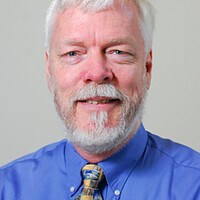White House could announce world's largest marine reserve soon
If all goes as planned, before the year is out as much as 700,000 square miles of the south-central Pacific Ocean could be off limits to fishing, resource exploration, and other economic activities – courtesy of the stroke of a presidential pen in Washington.
The move would turn the Pacific Remote Islands Marine National Monument, established by President George W. Bush in 2009, into the world’s largest marine reserve. In the process it would double the area globally subject to such tight fishing restrictions.
“We anticipate sometime in late summer or early fall an announcement from the White House on their decision,” said Seth Horstmeyer, a director for the Pew Charitable Trusts’ Global Ocean Legacy program.
Well-designed and properly managed marine protected areas (MPAs) are widely seen in the conservation community as effective ways to restore vitality to overfished areas, shelter and nurture fish in the quest to develop sustainable fisheries, and act as reservoirs of biodiversity and resilience in the face of global warming and ocean acidification.
“They are the most practical tool we have available to us to protect ecosystems and keep them functioning and protect habitat” from a range of human-based threats, says Tundi Agardy, a marine biologist who heads Sound Seas, a marine-policy group in Washington.
Nor is the United States alone in working to expand the area of the oceans that would represent havens for marine life and the ecosystems that support it. In late July, for instance, Scotland announced the doubling of the area of its marine reserves – including what purports to be the largest MPA in Europe.
In February, Palau announced plans to extend full protections for marine life in some 80 percent of the waters embraced by its 200-mile exclusive economic zone. Kiribati has pledged to end commercial fishing by Jan. 1, 2015, in a California-size marine reserve it governs.
Meanwhile, Britain is weighing approval of a commercial-fishing-free zone around the Pitcairn Islands in the southeastern Pacific that would cover some 320,000 square miles.
These moves are part of an international effort under the United Nations Convention on Biological Diversity to protect 10 percent of the world’s oceans by 2020 (scientists advising the International Union for the Conservation of Nature have pushed for 20 percent).
So far, however, only about 1.8 percent of the world’s oceans are covered by some form of protection. Within that total, only about 0.6 percent falls under fishing bans, generally seen as the most effective form of MPA. Recent announcements nudge the needle toward the 2020 goal, but not as quickly as many conservation specialists would like.
Part of the challenge is coming up with the right design. In a study published in February in the journal Nature, marine scientists identified five features that determine a reserve’s chances of success: It’s part of a no-take zone, at least 10 years old, at least 62 square miles in size, well enforced, and isolated by deep water or sand. The most successful protected areas in the study had at least four of these traits. Of the five, isolation appeared to be the most important criterion. By that measure, the Pacific Remote Islands Marine National Monument would fit the bill as a potential winner. The waters around the islands teem with life and host about as pristine a set of marine ecosystems as one can find anywhere.
Remote patches of sea represent also the low-hanging fruit for conservation. Local economic and political pushback to fishing or other restrictions is relatively weak. And regulations can often be adopted by executive order.
What Dr. Agardy dubs the race to announce the largest MPA says little about how well those areas will be managed and policed and how adequate their long-term funding will be. In the rush to designate protected areas by a certain date, “areas least needing protection are the ones that get designated” for protection, she says.
Soon, countries will have to increase their focus on near-shore waters – where economic interests are more deeply entrenched and where environmental problems generated far inland can flow down rivers to affect the quality of coastal waters, historically the most biologically productive.
Preservation efforts will be time-consuming and messy, requiring full participation from stakeholders from the outset in planning the protected area. “A lot of people would agree it takes usually a decade, a lot of give and take, and a lot of messy sausage-making” to lay the groundwork for an effective marine protected area, Agardy says.





